The Alternate Ending of the Original 'Jungle Book' and What It Could Mean for the New Version
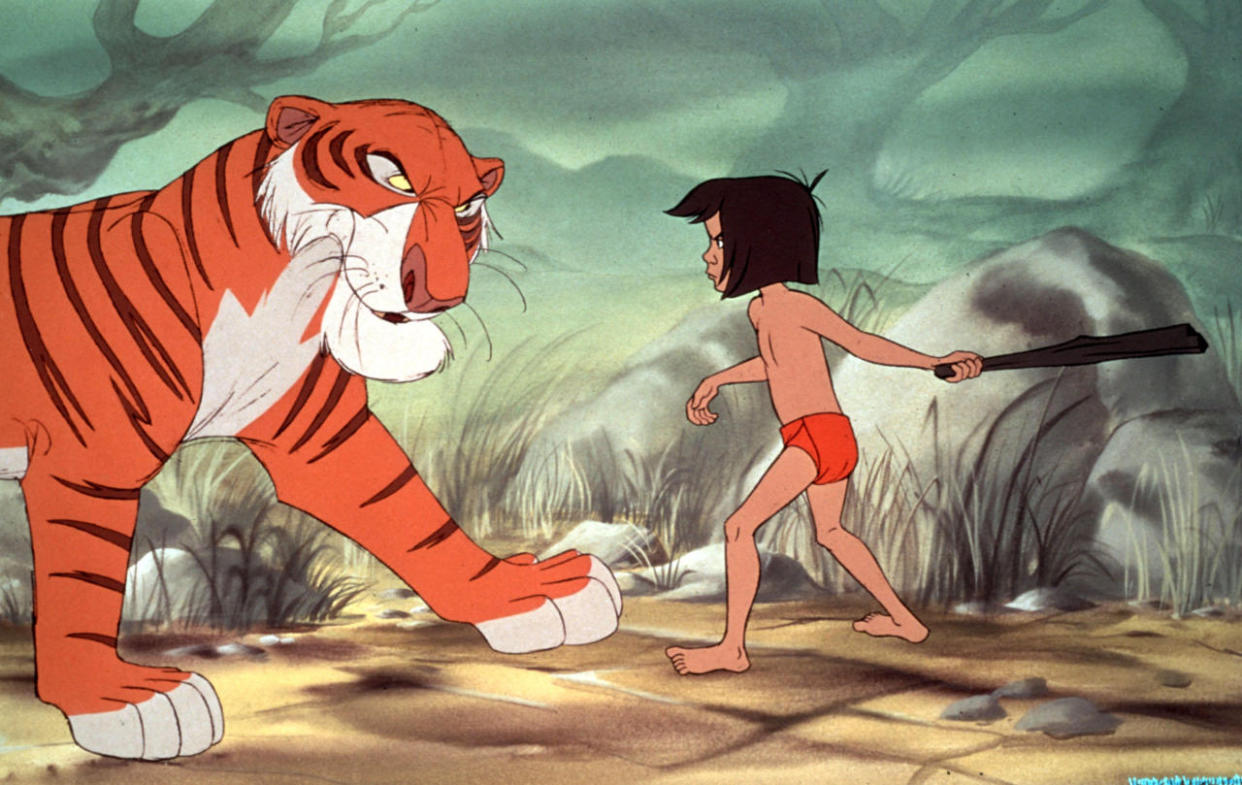
Mowgli and Shere Khan in the 1967 Jungle Book. (Photo: Alamy)
Warning: This article contains spoilers for the ending of Disney’s new version of The Jungle Book.
Here’s how you know that Disney is feeling bullish rather than bearish about Jon Favreau’s live-action remake of The Jungle Book, which opens in theaters Friday. In the wake of strong reviews and favorable box-office forecasts, the Mouse House has already granted Favreau the go-ahead for a sequel. It’s clear that the director might have anticipated that, because his Jungle Book leaves room for another chapter. Where the original 1967 animated feature ended with Mowgli being seduced into returning to the “man village” by a pair of feminine eyes, Favreau’s film sends the boy hero (played by newcomer Neel Sethi) back to his wolf pack in the wake of vanquishing the menacing tiger Shere Khan (Idris Elba), while his animal pals Bagheera (Ben Kingsley) and Baloo (Bill Murray) look on proudly. For now, at least, Mowgli intends to enjoy the bare necessities of jungle life, rather than try to adapt to living around other humans.
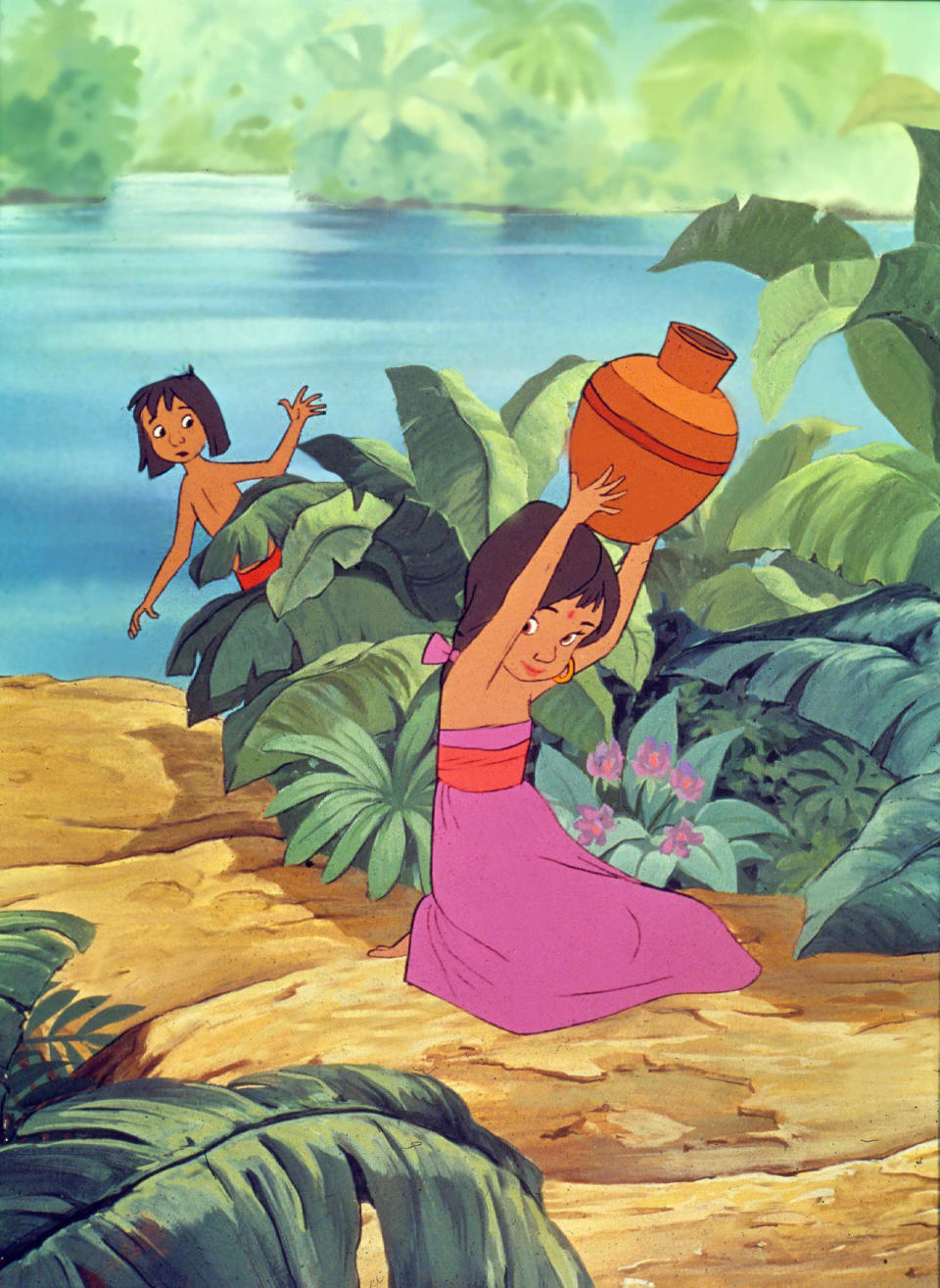
The animated Mowgli gets tempted to join the human world. (Photo: Alamy)
Compared with this new version, the 1967 cartoon is more of a closed, well, book. Once Mowgli vanishes inside the man village, it’s implied that he likely won’t be coming out again any time soon. (A belated 2003 sequel has him visiting the jungle, but that deservedly forgotten follow-up exists alongside Cinderella II and Return to Never Land in deep Disney-vault obscurity.) At one point during the development process, Walt Disney — who died the year before the film’s release — and his animation team contemplated a very different ending, one that drew on the less-remembered elements of the original Mowgli stories penned by Rudyard Kipling.
Related: Secrets of Disney’s New ‘Jungle Book’: From Bleeding-Edge FX to Bill Murray’s Brisket
In a bonus feature included on the 2014 “Diamond Edition” Blu-ray rerelease of The Jungle Book, Disney animator Raymond Persi turned the original treatment into a newly storyboarded version of that alternate finale, one that gives the movie an entirely different third act. Seriously, this new ending is surprisingly long, but it also contains some interesting similarities with the way Favreau’s version of Kipling’s tale comes to a (temporary) close. So let’s break it down!
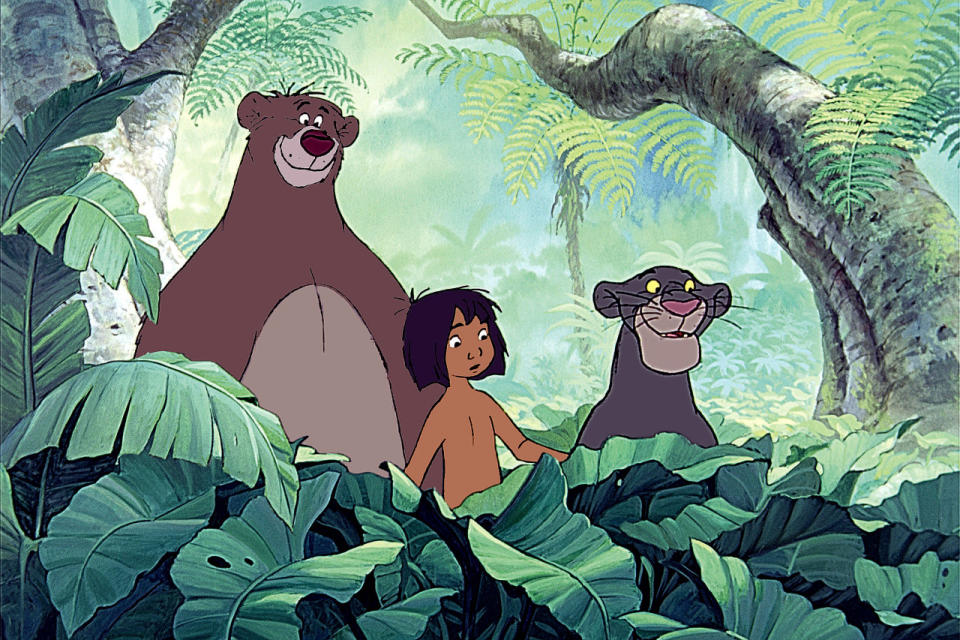
Baloo, Mowgli, and Bagheera (Photo: Alamy)
Picking up from the moment when Bagheera and Baloo lead an unwilling Mowgli to the gates of the man village, this version of events has him laying eyes not on a girl but on a gruff older man holding a musket. This is Buldeo, a character Kipling introduced in the Jungle Book’s fourth story, “Tiger! Tiger!” Innately distrustful of anything wild, Buldeo fires a warning shot when he catches sight of Bagheera. The panther pushes Mowgli forward, telling him, “Get going, man cub!” As Mowgli rushes towards Buldeo, the older man takes aim again, until his gun is knocked away by another villager. Buldeo claims that the child is “bewitched,” but he’s overruled by a woman who takes a closer look at Mowgli and says disbelievingly, “Nathoo … can it be you?”
That’s right, it’s a mother and child reunion as Mowgli’s parents race over to hug their son, who they say was washed away during a flood. They usher the boy inside the village, while Baloo and Bagheera vanish into the brush. But instead of segueing into the closing-credits rendition of “The Bare Necessities,” the story jumps ahead three months, at which point the newly christened Nathoo is feeling restless in his new surroundings. His icy relationship with Buldeo hasn’t thawed either, particularly when he makes a point of publicly spoiling the hunter’s manufactured tales of killing Shere Khan. He also reveals that King Louie’s Monkey City has a heretofore-unseen stash of treasures. With Buldeo successfully convincing the rest of the village that these are the ravings of a “jungle brat,” Nathoo decides to reclaim his identity as Mowgli. He grabs a torch and flees back into the jungle, where he intends to use “man’s red flower” — the animals’ name for fire — to intimidate Shere Khan.
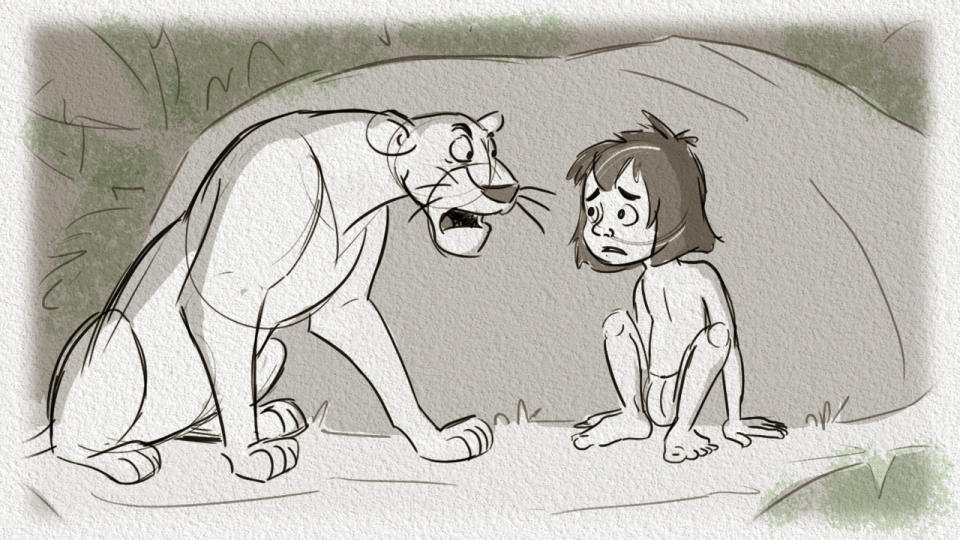
A still from the Blu-ray’s storyboarded alternate ending. (Photo: Disney)
In the process, though, the boy winds up intimidating his former jungle pals, taunting, “Come forward and face the weak man cub now!” Even Baloo and Bagheera are disgusted by Mowgli’s actions, and the boy winds up sleeping by a campfire alone, with Shere Khan hiding just out of sight. But Buldeo gets to the kid first, demanding that he lead him to Monkey City’s riches. With the elder man’s “red flower” keeping King Louie’s troops at bay, Mowgli is forced to fill a wooden box with treasure and then haul it to the edge of the river. There, Buldeo celebrates his triumph with a bit of monologuing, saying that he intends to set fire to the jungle and burn all its residents — Mowgli included — to a crisp.
Related: ‘Jungle Book’: 8 Things Disney’s 1994 Remake Taught Us
That boast gives Mowgli just enough time to wrest the torch away, tossing it into the water. Buldeo raises his gun in response, but a lurking Shere Khan leaps out of the jungle gloom and gobbles down his dinner. Thinking quickly, Mowgli grabs the loose gun and trains it on the tiger, pulling the trigger. Cut to: Baloo, Bagheera, and Mowgli having a happy reunion mere feet away from Shere Khan’s body. The animals lead the man cub back to the village, where he is welcomed back as a hero. It’s also made clear that he’ll be able to go back and forth between civilization and the wild, as he is granted full membership in the wolf pack.
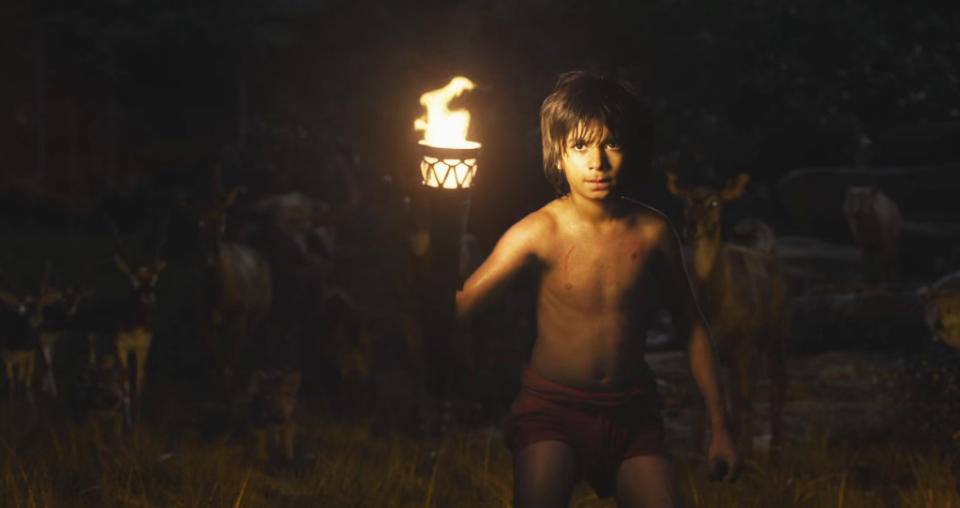
Neel Sethi in the new Jungle Book. (Photo: Walt Disney Studios)
While developing their version of The Jungle Book, Favreau and screenwriter Justin Marks almost certainly had access to story treatments for the cartoon, and elements from this alternate ending do turn up in the new feature. Mowgli stealing the torch from the man village, for example, is something that Sethi’s character does in the film, although in this case, he doesn’t interact with any of the humans inside. He also inadvertently carries out the plan of burning the jungle down, with his torch setting off a blaze that sweeps through the brush while Shere Khan pursues him through the treetops.
Making him an accepted member of the wolf tribe is also borrowed from both the ’67 film and Kipling’s stories, where Mowgli stays with the pack until he’s 17 and has a number of other adventures along the way. Many of these tales have never been told on the big screen before, which gives Favreau plenty of material to work with in the sequel and possibly beyond. Take “The King’s Ankus,” which involves Mowgli stumbling upon a treasure. Or how about “Red Dog,” where the giant snake Kaa temporarily allies itself with the wolves when they have to fight a pack of wild dogs. With great story fodder like this at Favreau’s disposal, the 10-year-old Sethi might be wearing those red shorts for another seven years and three movies.
Watch Sir Ben Kingsley talk about finding the voice of Bagheera:

